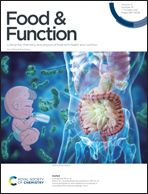The enrichment of honey with Aronia melanocarpa fruits enhances its in vitro and in vivo antioxidant potential and intensifies its antibacterial and antiviral properties
Abstract
The effect of adding the chokeberry fruit additive to rape honey was studied with regard to the physicochemical properties and biological activity. Two samples of dried powdered fruits were used to enrich the honey (1 and 4% v/v) during creaming. The obtained products were characterized in terms of sugar content, acidity, conductivity, total phenolic, flavonoid and anthocyanin contents and HPTLC polyphenol profiles. The antioxidant properties of enriched honeys were studied in vitro (FRAP, DPPH, and ABTS) and in vivo using a S. cerevisiae model. The inhibitory effect against 5 bacterial strains and coronavirus surrogate bacteriophage phi6 was tested. The addition of chokeberry significantly modified the physicochemical properties of honey and enhanced its antioxidant potential (from 3 to 15 times). Using HPTLC analysis, the occurrence of flavonoids, phenolic acids, and anthocyanins in chokeberry enriched honey was determined. The modified honey protected yeast cells against H2O2-induced oxidative stress when used as a pretreatment agent. All tested bacteria were susceptible to enriched honey in a dose-dependent manner. The antiviral potential of enriched honey against the model bacteriophage was discovered for the first time. In terms of numerous health benefits determined, honey enriched with Aronia melanocarpa fruits can be considered as an interesting novel functional food, which may increase the consumption of chokeberry superfruits.



 Please wait while we load your content...
Please wait while we load your content...